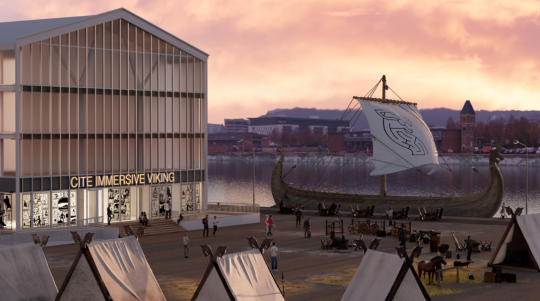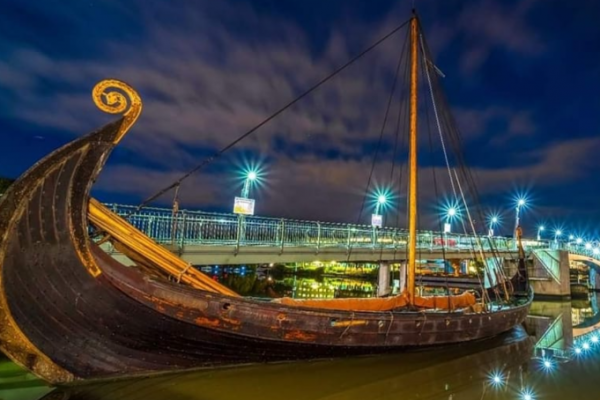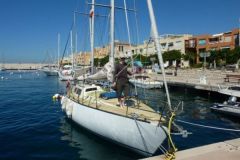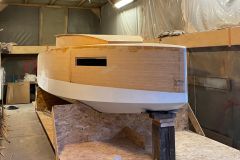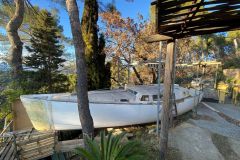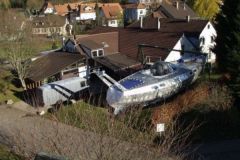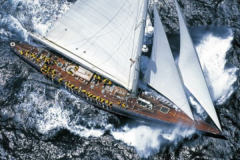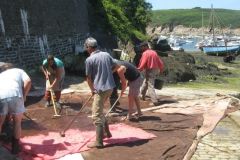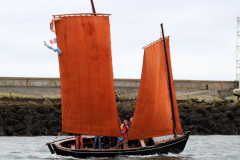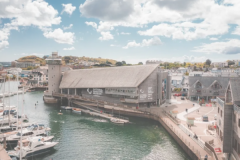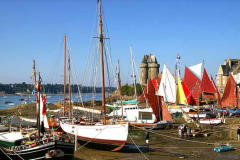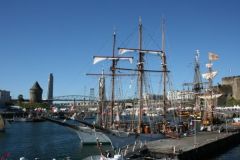In the heart of the ancient Viking capital, Rouen, Les Enfants de Rollon are committed to reviving the often forgotten history of Normandy. Ludovic Garnier, president of the association, shares with us this mission, which ranges from building drakkars to preserving Viking heritage. Another initiative is on the horizon for 2024: the creation of an Immersive Viking City.
A look at Viking history
"How can you know where you're going when you don't know where you came from!" . A phrase charged with meaning for Les Enfants de Rollon, and which reveals a fact: the lack of knowledge of Norman history. This motto, far from being anodyne, carries with it the ambition to forge a regional identity, in the image of other French regions. For Ludovic Garnier, president of the association, it's a call to reconnect with our past: in a society that is sometimes lost and in search of bearings, this connection is crucial. We carry it within us. We can rely on it to move forward and build our future."
Rouen was once a Viking capital. Originally from Scandinavia, Rollon became Count in 911. In 2019, the structure Les Enfants de Rollon was born, with the aim of building drakkars for use by Norman institutions, so that the Viking spirit is known to all.
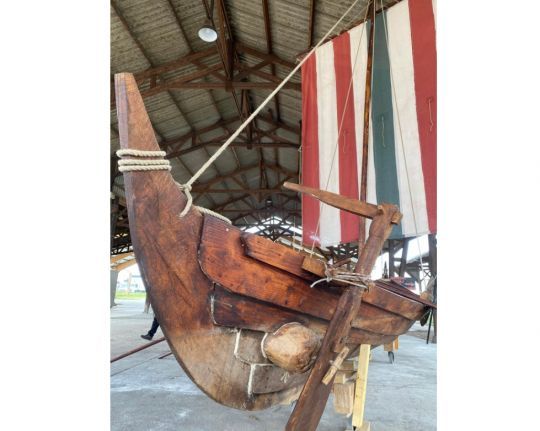
Dedicating ourselves to the legacy of knowledge
Les Enfants de Rollon has already built several drakkars. Faced with the challenge of a lack of marine carpenters in the region, the association draws on the skills of its members, including novices. This adventure, which combines tradition and apprenticeship, bears witness to the desire to preserve ancestral know-how and pass it on to future generations.
For these enthusiasts, the goal is to sail the waves on drakkars, just like their ancestors. The strategic decision was therefore taken to build the Freya, a replica of the Gislinge, a 7.7-metre wooden ship dating from 1130 AD and found on the island of Sjælland in Denmark.
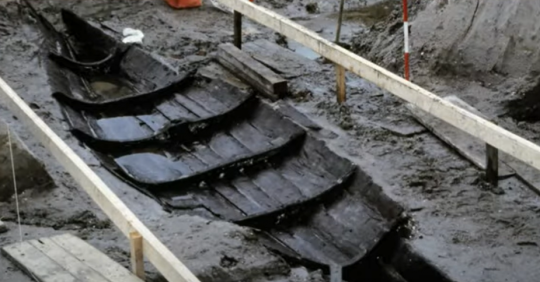
The plans were obtained from Scandinavian specialists. Built from oak and Douglas fir, this boat, dedicated to Viking reconnaissance, has already been successfully tested on the water.

This first stage enabled the team to learn a number of techniques, such as shaping the keel, steam-bending the clapboard planks, and installing the frames in the hull.
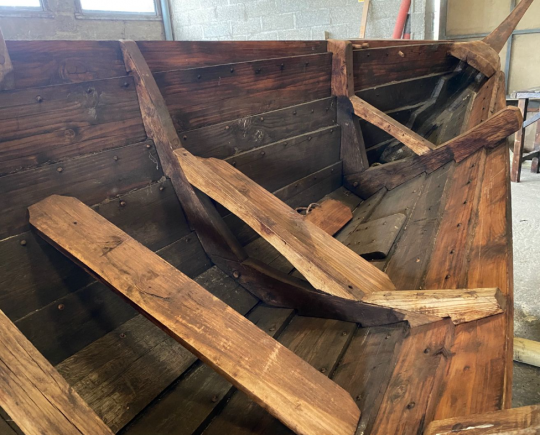
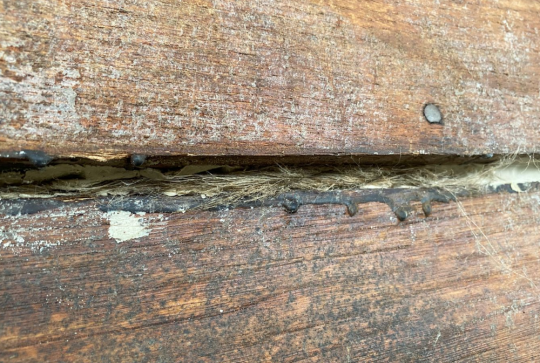
The challenge of realization
Asked about future ambitions, Ludovic Garnier reveals a project: the construction of a 20-meter vessel. He confides: "It's all the more demanding given that the Rouen region has lost its shipbuilding skills since the closure of the Normandy shipyards in 1986, and long before that for wooden shipbuilding" . The lack of available shipwrights in Rouen forced the association to mobilize the skills of its members.
At the heart of this human adventure is the construction of a "drakkar", a term well known to the general public. The association welcomes new members, some of them novices in the art of woodworking, underlining Les Enfants de Rollon's commitment to sharing knowledge.
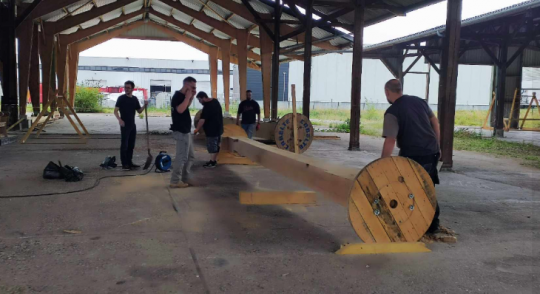
As for access to the work area, Ludovic Garnier is aware that the boat cannot exceed a width of 4.20 m and a maximum length of 20 m, which requires interpretation of available historical plans: ''It's a deliberate choice to respect the historical conception as much as possible while adapting our vision to today's reality."
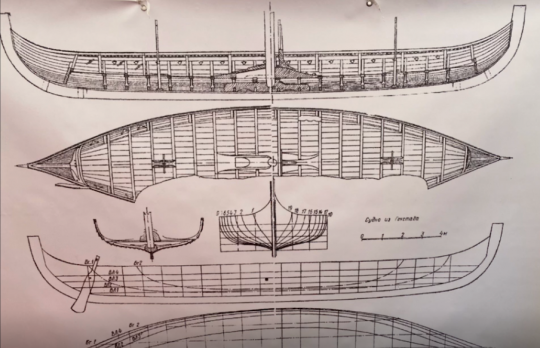
Responding to modern needs
But while the Enfants de Rollon team devotes its energies to preserving Viking heritage, this mission requires crucial choices. Among them, the inevitable renunciation of certain ancestral methods, such as working with an axe from whole trees; a skill that requires a long apprenticeship.
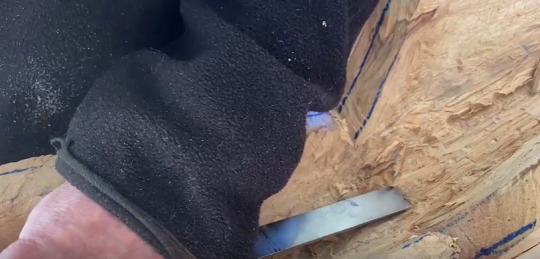
Ludovic Garnier and the volunteers remain resolute: "Above all, our quest represents a tribute to our ancestors, a skilful navigation between tradition and innovation. In the end, we're aiming for a boat that will be closer to the Tune model than to the Gokstad or Oseberg". A joint effort to respect the historic design as closely as possible, using materials such as oak and assembly techniques such as riveting and pegging.
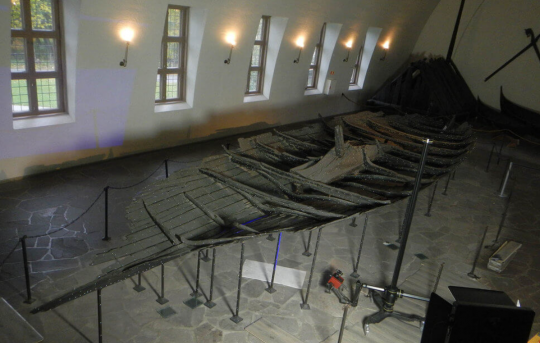
The Tune boat (Tuneskipet) was a ship used both as a small warship and for transporting goods, with a wide hull. The ship was found in 1867 on the Norwegian island of Rolvsoy, in a burial mound called Bathaugen or the boat mound. Its design dates from around the year 900. From the remains of the boat, its dimensions have been estimated at 22 meters long and 4.35 meters wide, and it must have had 11 or 12 pairs of oars. The keel is 14 meters long.
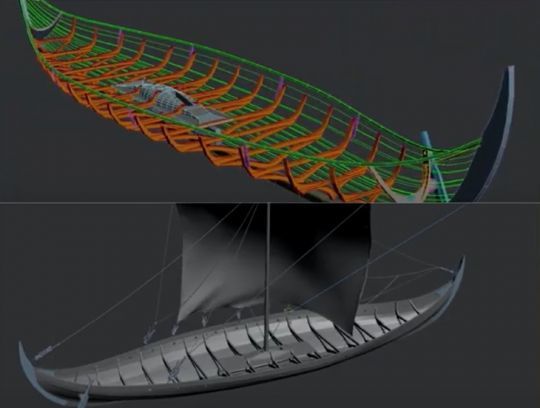
A journey back in time to our Nordic heritage
2024 will see the inauguration of an innovative concept on the banks of the Seine in Rouen: the opening of a Viking Immersive City. Ludovic Garnier, who simultaneously holds the position of director of this project and president of Les Enfants de Rollon, emphasizes that these are two distinct roles which nevertheless " share a love of history and a desire to dust it off... especially when you consider that 85% of French people love history, but only 30% visit museums."
The Immersive Viking City aims to revolutionize this statistic by adopting an avant-garde approach, combining cutting-edge technology, authentic archaeological artefacts and immersive staging.
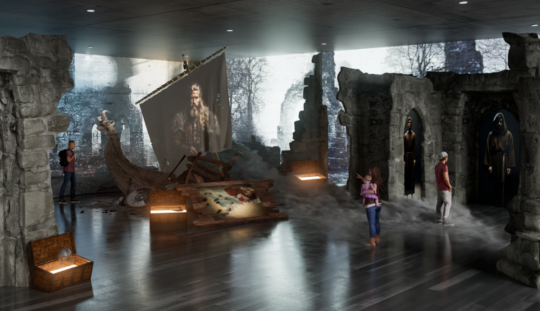
"We're looking to arouse emotions and curiosity by highlighting a local hero, Rollon. Visitors will be actively involved in their discovery, stimulated by new technologies. Rigorous historicity will be maintained."
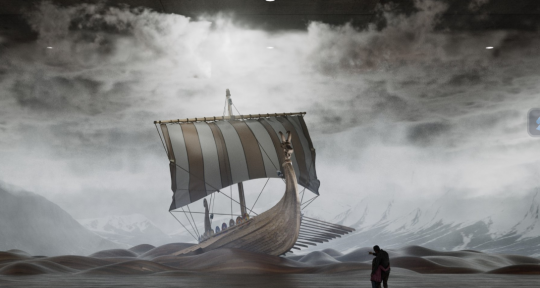
The city aspires to be a dynamic, popular and inclusive place. As for the possible presence of a drakkar on the quays of the Seine, Laurent Garnier leaves it in doubt: "Answer in spring 2024."
